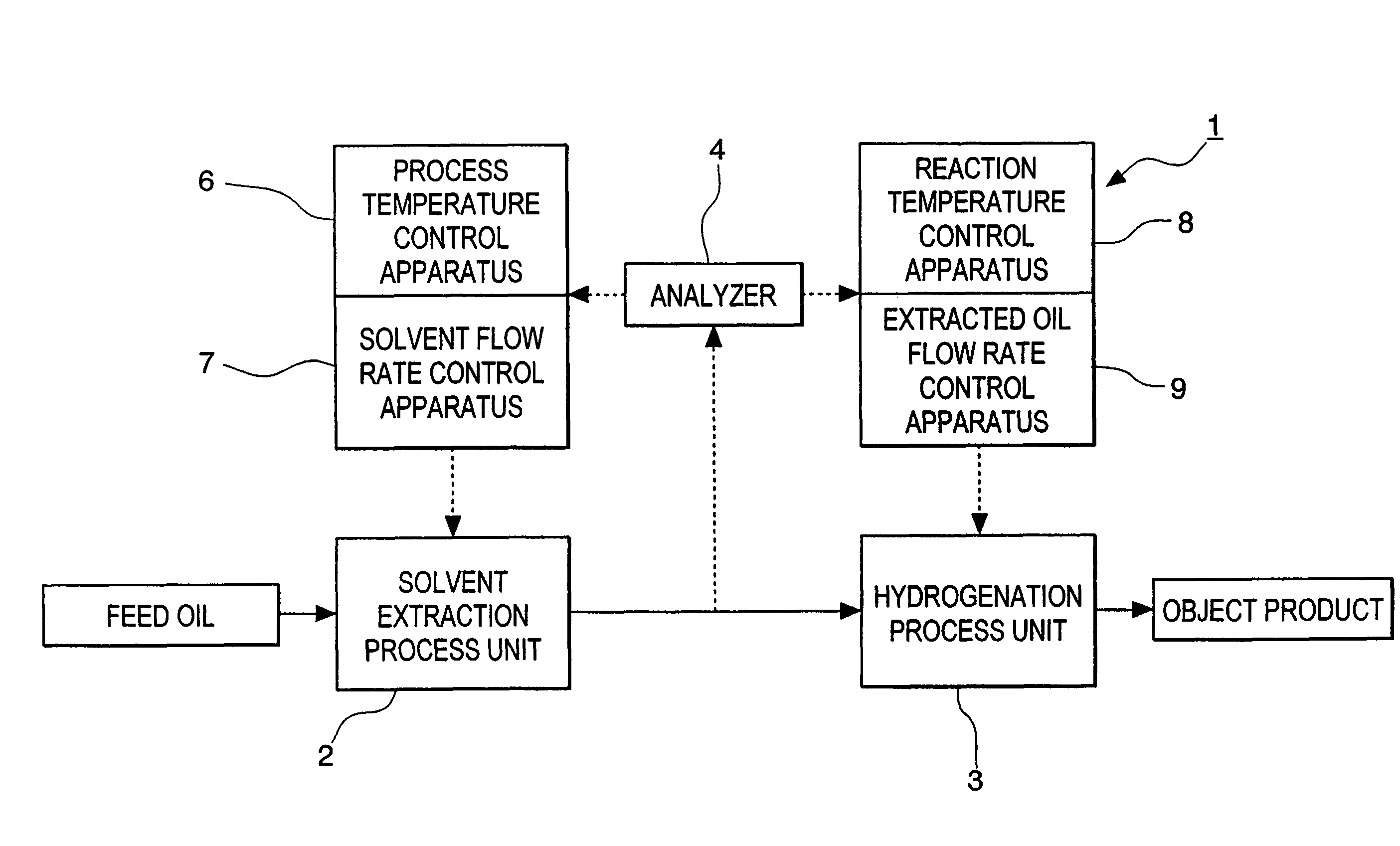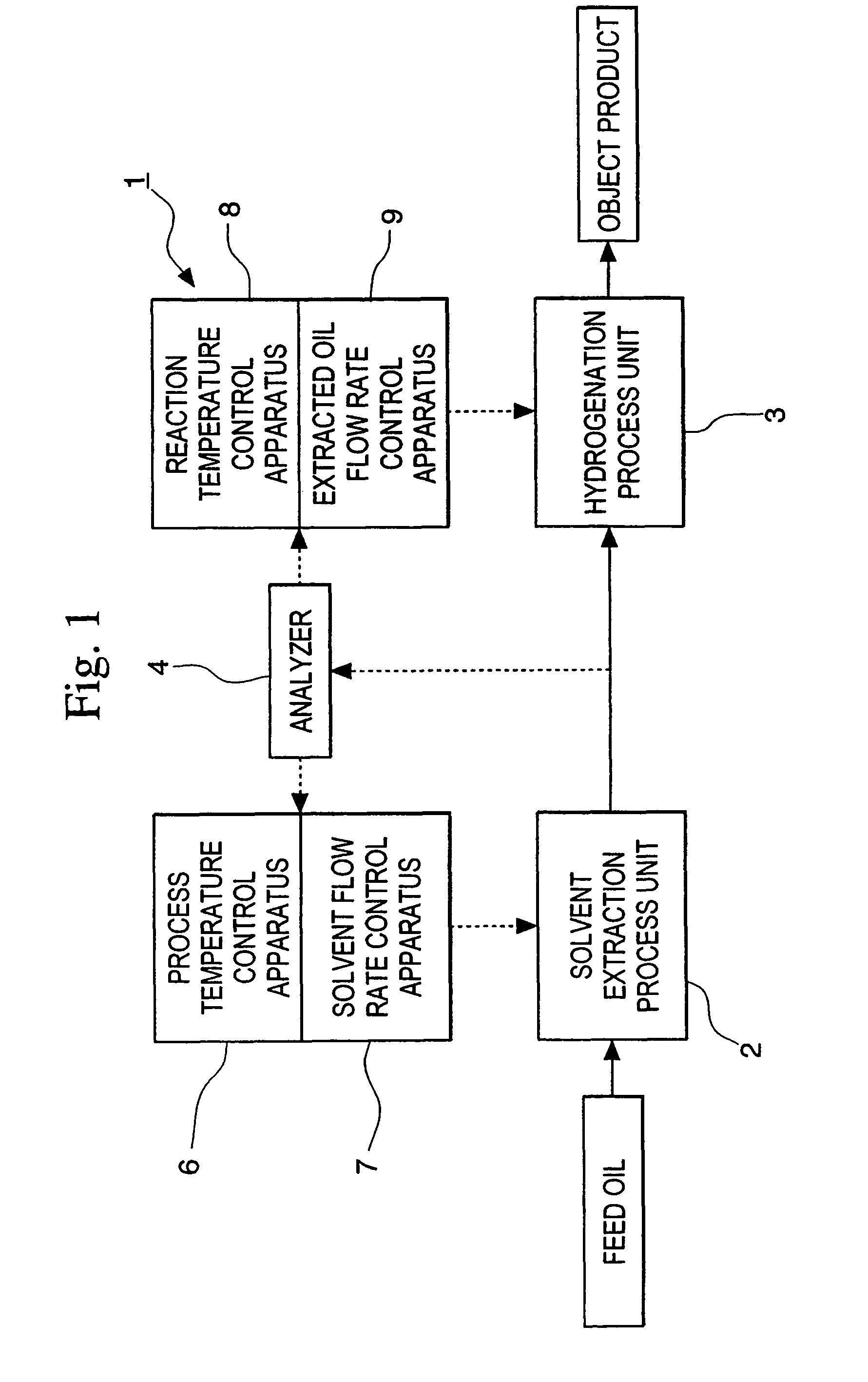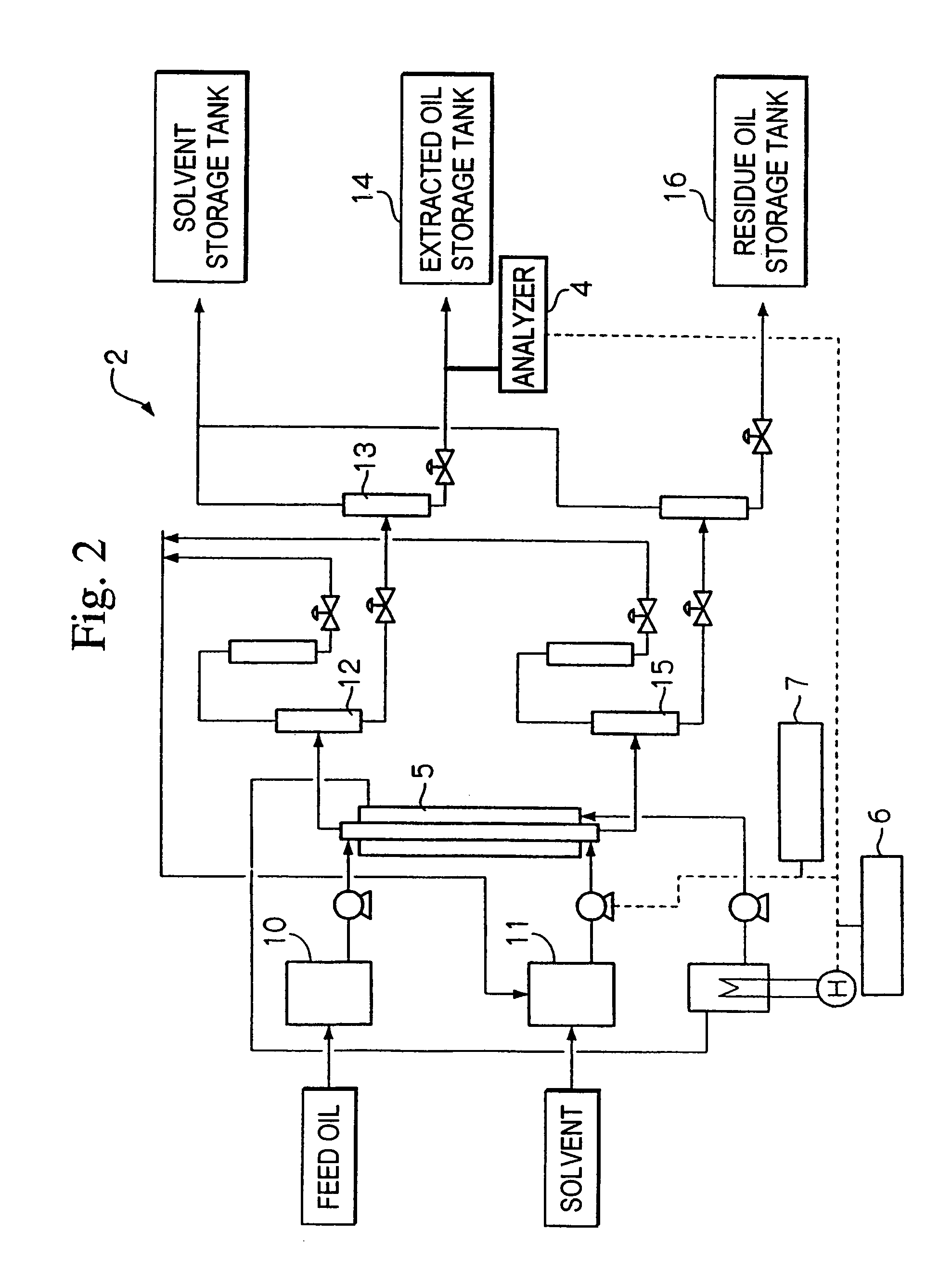Method of refining heavy oil and refining apparatus
a technology of heavy oil and refining equipment, which is applied in the direction of working-up pitch/asphalt/bitumen by selective extraction, optical radiation measurement, separation process, etc., can solve the problems of short catalyst life of the process, large amount of catalyst consumed, and high maintenance cos
- Summary
- Abstract
- Description
- Claims
- Application Information
AI Technical Summary
Benefits of technology
Problems solved by technology
Method used
Image
Examples
example 1
[0090]In order to manufacture the feedstock for fluidized catalytic cracking, the feed oil 1 below undergoes the solvent extraction process, and the extracted oil is manufactured. Moreover, as a feedstock for the fluidized catalytic cracking, because metal concentrations, residue carbon, and sulfur concentrations are limited, the reaction conditions and reaction rates of the later stages of the hydrogenation process must be taken into account, and the extraction process is controlled such that the concentration of the heptane insoluble (C7Insol) in the fraction of the obtained extracted oil that cannot be fractionally distilled is equal to or less than 5.5 wt %, and the concentration of the poly-aromatic (PP) in the fraction of the extracted oil that cannot be fractionally distilled is equal to or less than 38.5 wt %.
[0091]
Feed oil 1Feed oil 2Specific gravity (15 / 4° C.)1.0320.952Viscosity at 210 F. (cSt)432780Sulfur concentration (wt %)4.910.19Ni (ppm)3529V (ppm)1430Asphaltene (wt %...
PUM
| Property | Measurement | Unit |
|---|---|---|
| weight ratio | aaaaa | aaaaa |
| temperature | aaaaa | aaaaa |
| boiling point | aaaaa | aaaaa |
Abstract
Description
Claims
Application Information
 Login to View More
Login to View More - R&D
- Intellectual Property
- Life Sciences
- Materials
- Tech Scout
- Unparalleled Data Quality
- Higher Quality Content
- 60% Fewer Hallucinations
Browse by: Latest US Patents, China's latest patents, Technical Efficacy Thesaurus, Application Domain, Technology Topic, Popular Technical Reports.
© 2025 PatSnap. All rights reserved.Legal|Privacy policy|Modern Slavery Act Transparency Statement|Sitemap|About US| Contact US: help@patsnap.com



